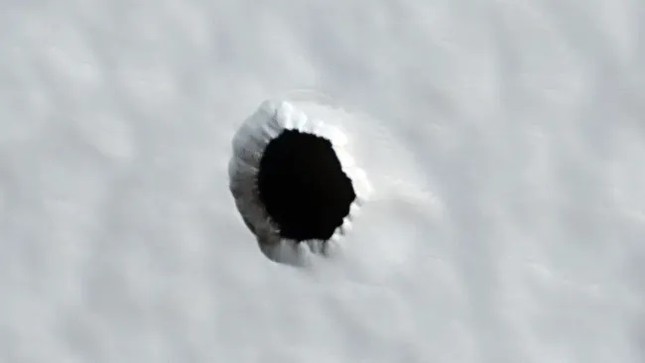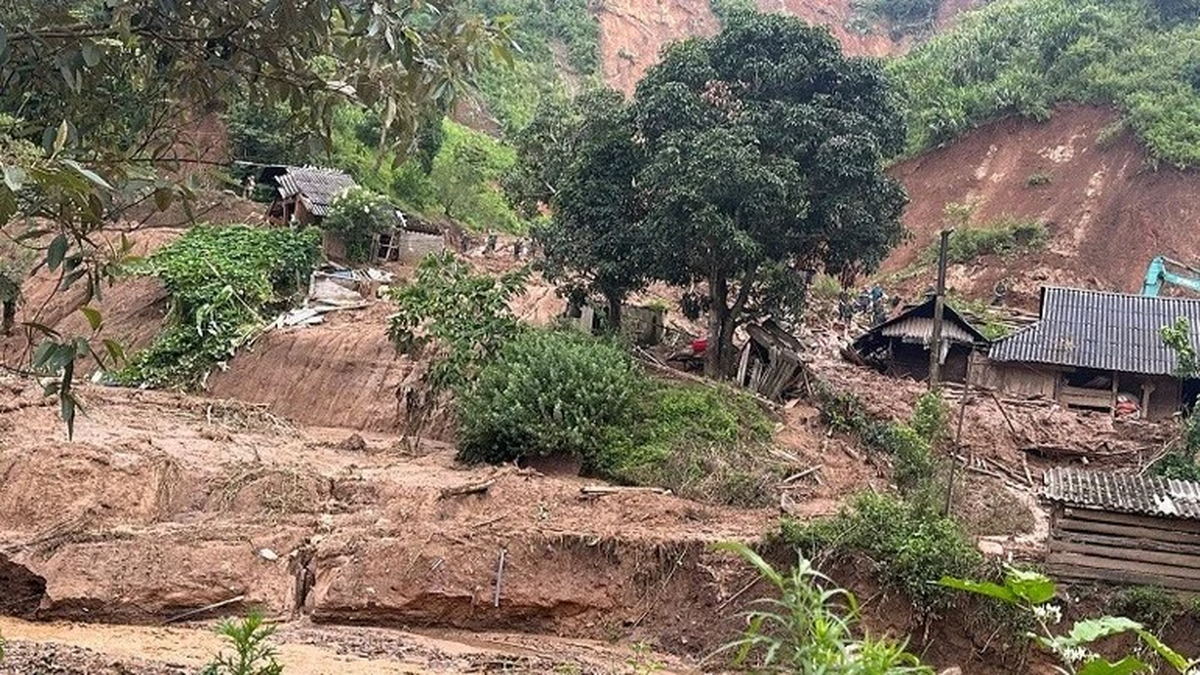TPO - The recently noticed crater on Mars could open up a larger cave that could provide a habitat for astronauts and life on Mars.
A mysterious crater on the side of an ancient volcano on Mars has recently been revealed beneath the surface of the Red Planet. The crater, just a few metres wide, was first photographed by NASA’s Mars Reconnaissance Orbiter, which was about 256 kilometres above the Martian surface at the time. It is one of several ridges seen on the flanks of a trio of large volcanoes in the Tharsis region of Mars. This particular crater was found on a lava flow above the extinct volcano Arsia Mons and appears to be a vertical shaft.
 |
The captivating crater on Arsia Mons, captured by the High Resolution Imaging Science Experiment (HiRISE) instrument on the Mars Reconnaissance Orbiter. (Image: NASA/JPL–Caltech/UArizona) |
There are a number of reasons why craters and caves on Mars are of interest. First, they could provide shelter for future astronauts; because Mars has a thin atmosphere and lacks a global magnetic field, it cannot shield itself from radiation from space the way Earth does. As a result, radiation exposure on the Martian surface is on average 40 to 50 times greater than on Earth.
Another intriguing aspect of these pits is that they may not only have provided shelter for astronauts, but could have been a safe haven for life on Mars in the past – perhaps even today, if microbial life actually exists there.
The presence of these so-called pits on the flanks of volcanoes is a big clue that they may be related to volcanic activity on Mars. Lava channels can flow out of the volcano; when the volcano goes extinct, the channels dry up. Planetary scientists have also seen pit chains on the flanks of Martian volcanoes, which are linear sections of pits that appear to run the length of a lava tube.
However, the depth of these craters is a mystery, and it is not yet certain whether they open up into a large cave or are contained within a small cylindrical depression. Some craters on Mars have been photographed when the sun is high enough in the sky to illuminate what appear to be the edges of the crater walls, suggesting that they are shafts that extend straight down the side of the volcano.
Another explanation—perhaps less likely—is that these holes open up where underground rivers once flowed billions of years ago.
We can see a similar phenomenon on Earth, in the form of geological features called karsts, which form when limestone bedrock dissolves and weakens, creating holes and sinkholes that open up to areas of underground water. If that were the case on Mars, then if the Red Planet ever hosted life, those creatures might have taken refuge in karsts. Indeed, the water flowing down the slopes of an active volcano would be warm, providing the perfect sheltered environment for life to thrive and thrive.
For now, though, it’s all speculation. We’ll only get some concrete answers once future missions actually explore them. NASA’s Ingenuity rover, or helicopter, spent three years on Mars before crashing in January 2024 after damaging one of its rotor blades.
According to Live Science
Source: https://tienphong.vn/ho-bi-an-tren-sao-hoa-se-la-ngoi-nha-tuong-lai-cua-con-nguoi-post1645434.tpo



































































































Comment (0)